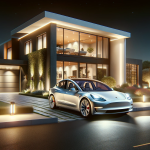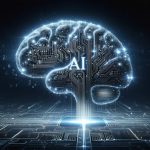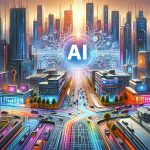Tesla, a frontrunner in the race towards autonomous driving, has made significant strides with its Full Self-Driving (FSD) software, reaching pivotal milestones such as the accumulation of over a billion miles driven by its fleet. The company’s commitment to this technology was reinforced by the recent update from FSD v12 and the transition from a ‘beta’ to a ‘supervised’ label, emphasizing the company’s confidence in its advancements. Furthermore, Tesla CEO Elon Musk has hinted at the future economic benefits that the widespread adoption of FSD technology could bring, despite the high costs involved in its development.
In the journey towards perfecting autonomous driving, Tesla has faced not only technological hurdles but also regulatory challenges. Contrary to what might seem like a regulatory bottleneck, two prominent Tesla executives have shed light on the actual complexities of developing FSD software. Elon Musk, Tesla CEO, and Rohan Patel, Vice President of Policy and Business Development, have opened up about the arduous process and investment required to make generalized self-driving a reality. Their insights suggest that the technological breakthroughs, rather than the regulatory environment, will be the primary drivers for change in the field of autonomous transportation.
The Technical Challenge of Achieving Full Autonomy
During a recent interaction on social media, Elon Musk conveyed the magnitude of the challenge Tesla faces in making generalized self-driving work. The CEO outlined the enormous financial commitment necessary for training compute, data pipelines, and video storage – an investment exceeding $10 billion this year alone. Despite these costs, Musk remains optimistic about the future profit potential of FSD.
Regulatory Hurdles and Mindset Shifts
Rohan Patel echoed Musk’s sentiments on the challenge of developing FSD technology. He acknowledged the need for a fundamental shift in the regulatory frameworks and the public’s mindset regarding general autonomy. Patel believes that Tesla’s technology advancements will be instrumental in pushing these regulatory changes forward, a sentiment that underscores the company’s leadership role in the space of autonomous driving.
Future Prospects: Robotaxis and Beyond
Tesla’s FSD technology is not just about the cars on the road today but also about the potential for future applications, such as robotaxis. Musk’s announcement of a robotaxi reveal later this year points to a future where Tesla’s investment in FSD could revolutionize the transportation industry. As advancements continue, Tesla’s proactive engagement with its fanbase and shareholders through social media and other platforms showcases the company’s commitment to transparency and public discourse on the evolution of autonomous driving.
Useful information for the reader
- Elon Musk foresees significant profit from FSD.
- Regulatory change to follow tech advancements.
- Robotaxis may soon become a reality.
Insights and Future Implications
The evolution of Tesla’s FSD software from beta to supervised indicates not only advancements in technology but also a strategic positioning for future services like robotaxis. Despite the substantial investment and the complexity of the task, the economic prospects of FSD technology appear to outweigh the costs. The discussions between Tesla executives and the public reveal a company at the forefront of autonomous driving, committed to overcoming the technological and regulatory challenges that stand in the way of a self-driving future. The progress Tesla has made with FSD v12 is a step towards realizing the practical applications of autonomous vehicles, potentially reshaping transportation and urban mobility.
The development of autonomous driving technology has been extensively covered by various media outlets. Engadget, in an article titled “Tesla’s Autopilot could eventually transition into full self-driving,” discusses Tesla’s Autopilot features and the company’s approach to autonomy. Meanwhile, The Verge, in an article called “Tesla’s approach to self-driving cars is different, and it might work,” delves into the unique aspects of Tesla’s approach compared to its competitors, highlighting the potential implications for the industry. Relating these insights to the current discussion, it is evident that Tesla’s step-by-step enhancement of its FSD capabilities aligns with a broader industry trend towards gradual autonomy, yet Tesla’s strategy sets it apart by involving the public directly in its iterative software evolutions.










